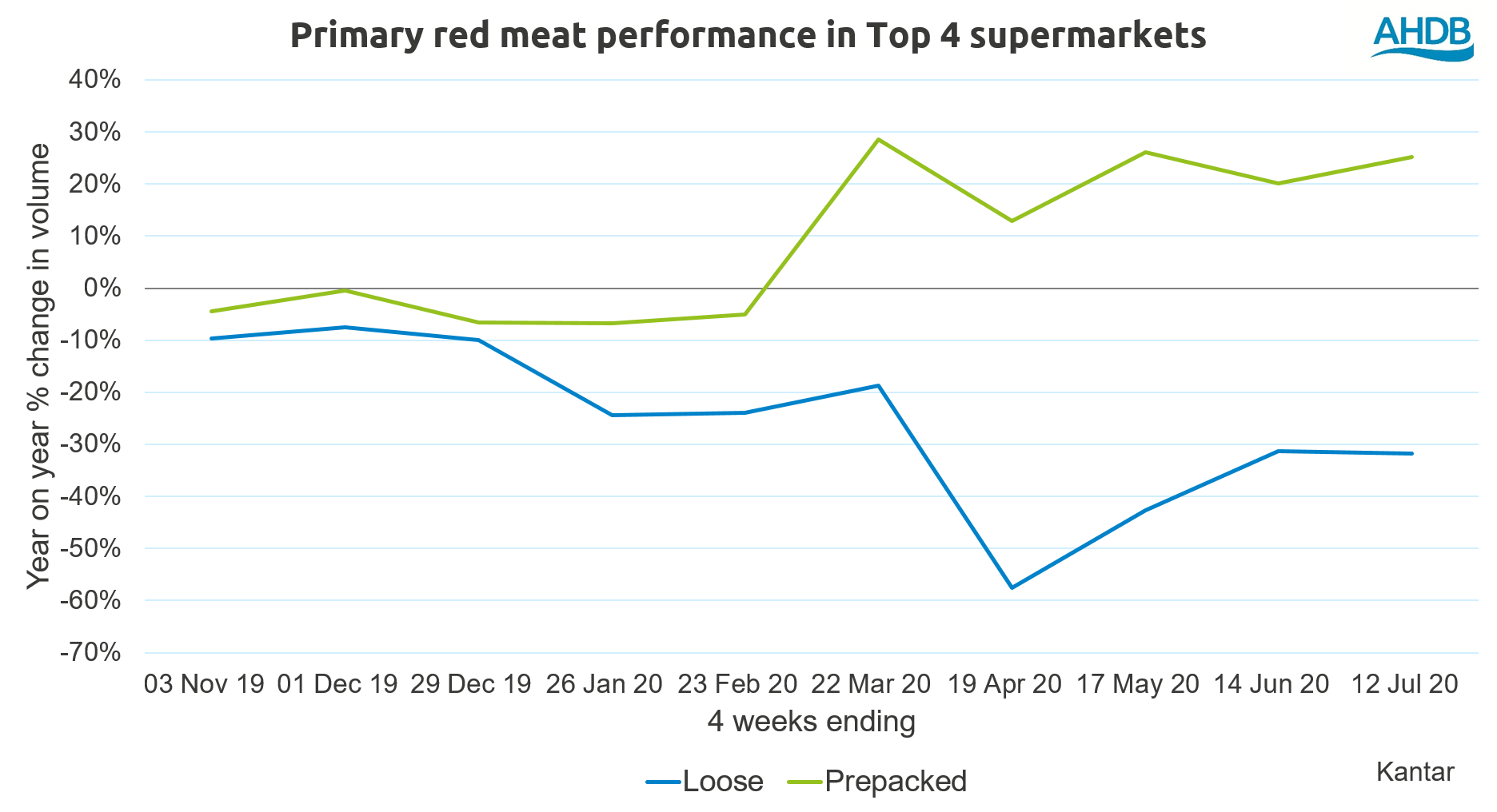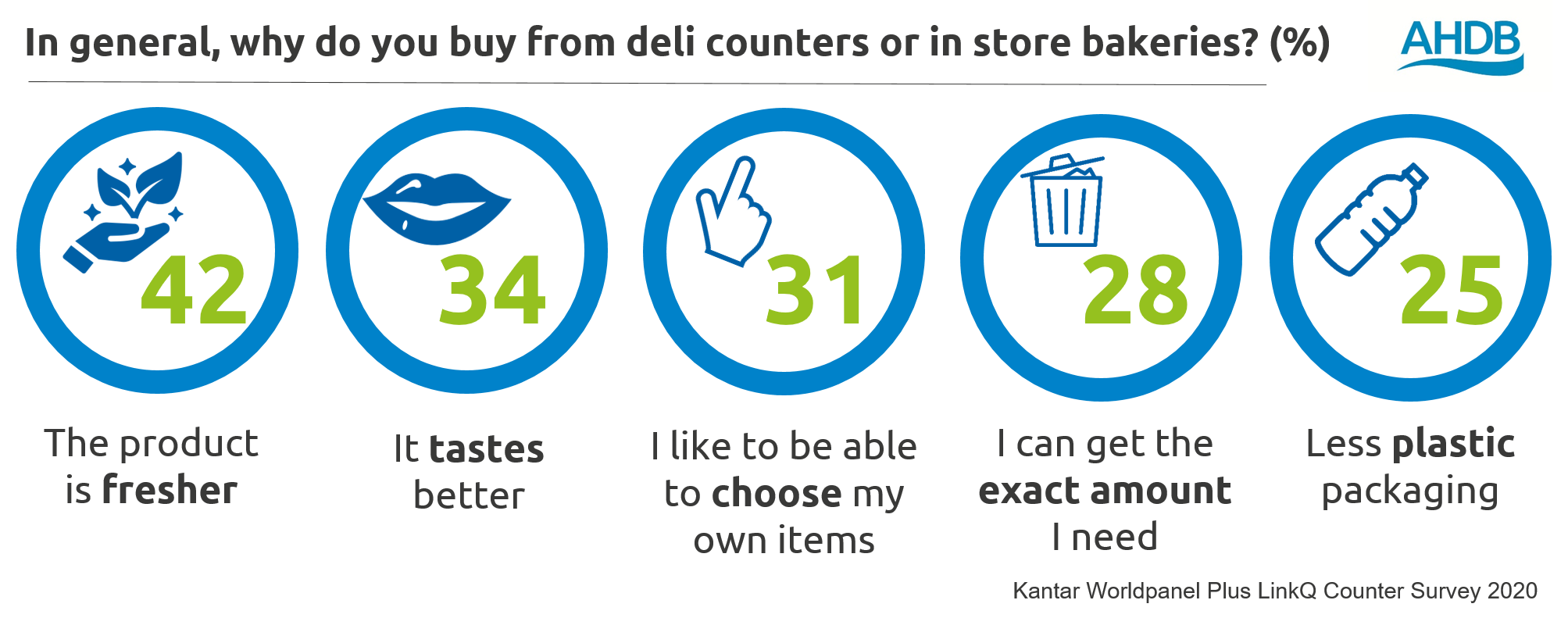Supermarket counters begin to reopen
Monday, 10 August 2020
In order to meet extraordinary demand for groceries during lockdown, supermarkets closed their counters and redeployed staff to restocking shelves. As counters begin to reopen, we take a look at the impact of the closures and what lies ahead for counters.
According to a study by Kantar*, 95% of shoppers said they usually purchase goods from counters/bakeries and 64% said they missed doing so in lockdown. The impact of counter closures was apparent in sales data – although volumes of prepacked primary red meat sold in the Big 4 soared by 19% during lockdown, volumes of loose primary red meat fell by 45% (12 weeks ending 14 June 2020 vs year ago).

The sharpest drops were in the first full month of lockdown (4 weeks to 19 April 2020) when volumes of loose primary red meat in the Big 4 fell by 57% year on year. Since then, sales have slowly recovered with the latest data showing year on year declines of 32% (4 weeks to 12 July 2020).
Counters struggle to justify space
However, even before the coronavirus crisis, some retailers were already beginning to rethink their counter services. When demand is flagging, counters can become inefficient uses of space and waste significant amounts of food. In the last two years, Asda and Tesco both announced cuts to their counter services, turning floorspace over to concessions and food-to-go, a market with growing demand. Asda is trialling in-store kiosks run by pan-Asian street food brand Panku and bakery chain Greggs.
Bucking the trend, in January this year, Morrisons announced plans to train 500 new apprentices to become butchers, bakers and fishmongers. Counters remain a core part of Morrisons’ offer, an increasingly unique one as other retailers move away from the model. In response to coronavirus supply chain disruptions, Morrisons opened steak and seafood BBQ bars in May, claiming to sell produce that would have usually been sold to restaurants.
Why we choose counters
Shoppers visit counters and in store bakeries primarily motivated by reasons of taste and practicality. Products purchased from these parts of the store are perceived to be of a higher quality and they also help shoppers who are looking to buy specific amounts or cut down on plastic packaging. Counters are therefore particularly popular with older and smaller households. However, prepacked products (including frozen) are chosen because consumers perceive them as more convenient and better value for money. In prepacked meat, this is enabled by a wide range of tier options to suit each shopper’s budget.

However, counters are important for larger, occasion-led purchases, with roasting joints making up 50% of volumes at counter, vs 23% in prepacked (12 weeks ending 14 June 2020, top 4 supermarkets). Shoppers purchasing from counters appreciate being able to talk to the butcher and have meat prepared for them, according to the AHDB/YouGov consumer attitudes tracker (Nov 2019).
What next for counters?
Convenience and value are major factors that make shoppers choose prepacked products over counters and are both factors that have driven long term shifts in shopper behaviour. A new challenge, however, is a perception that prepacked foods are more hygienic (43% of shoppers agree), a factor that may drive more shopper choices at the moment.
However, counters are popular with certain demographics and are particularly important for larger, special occasion meals. Counters require significant investment in staff and equipment to make them work, but for some retailers, they remain an important part of their proposition.
*Kantar Worldpanel Plus LinkQ Counter Survey 2020


